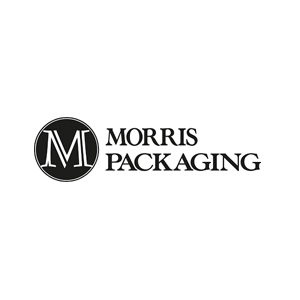Paving the Way for Environmental Business Development Through Wastewater Treatment
Friday, October 31, 2025
The environmental business sector is undergoing a major transformation, fueled by growing global awareness of water scarcity. In this landscape, the need for sustainable resource management and tighter regulatory standards is driving innovation in advanced wastewater treatment technologies. These cutting-edge processes surpass traditional secondary treatment methods, targeting a wider range of contaminants, facilitating the safe reuse of treated water across multiple applications, and reducing the release of pollutants into vulnerable ecosystems.
Addressing Emerging Contaminants
The core principle driving advanced wastewater treatment is addressing pollutants that traditional biological and physical-chemical methods often fail to eliminate effectively. These include micropollutants such as pharmaceuticals and personal care products (PPCPs), endocrine-disrupting compounds (EDCs), persistent organic pollutants (POPs), and trace amounts of heavy metals. Furthermore, advanced treatment aims to reduce nutrient levels (nitrogen and phosphorus) to extremely low concentrations, preventing eutrophication in receiving water bodies.
Key Technologies in Advanced Treatment
Membrane-based filtration processes, including microfiltration (MF), ultrafiltration (UF), nanofiltration (NF), and reverse osmosis (RO), play a crucial role in physically separating contaminants based on their size and charge. MF and UF are primarily used to remove suspended solids, bacteria, and viruses, often as pretreatment steps for more demanding processes. NF and RO, with their finer pore sizes, can effectively remove dissolved salts, heavy metals, and larger organic molecules, making them essential for water reuse applications requiring high purity.
Advanced oxidation processes (AOPs) represent another significant area of innovation. These processes generate highly reactive species, such as hydroxyl radicals, which can powerfully oxidize and break down complex organic pollutants into less harmful substances or even complete mineralization (conversion to carbon dioxide and water). Various AOPs are employed, including ozonation, ultraviolet (UV) irradiation (often combined with hydrogen peroxide or titanium dioxide catalysts), Fenton's reagent (iron and hydrogen peroxide), and electrochemical oxidation. The selection of a specific AOP depends on the nature and concentration of the target pollutants and the desired level of treatment.
Adsorption technologies also remain vital in advanced wastewater treatment. Activated carbon, in both powdered and granular forms, is widely used to adsorb a broad range of organic contaminants and improve the taste and odor of treated water. Advanced materials, such as engineered nanoparticles and bio-based adsorbents, are being explored for their enhanced removal efficiencies and selectivity towards specific pollutants. Ion exchange resins are another established adsorption-based technology, primarily used to remove dissolved ions, including heavy metals and nitrates.
Biologically advanced treatment methods are also evolving. While conventional activated sludge processes form the backbone of secondary treatment, modifications and enhancements are being implemented to achieve more stringent effluent quality. Membrane bioreactors (MBRs), which integrate membrane filtration with biological treatment, offer a smaller footprint and produce a high-quality effluent with low suspended solids and improved removal of some micropollutants. Anammox (anaerobic ammonium oxidation) and denitrification processes are increasingly employed for efficient nitrogen removal, often requiring less energy and chemical input than traditional nitrification-denitrification pathways. Furthermore, hybrid systems that combine different advanced treatment technologies are gaining prominence. These systems promise comprehensive removal of a wide array of contaminants. For instance, integrating membrane filtration with AOPs can provide synergistic benefits, where the membrane removes particulate matter and concentrates the target pollutants for more efficient oxidation. Similarly, combining biological treatment with polishing steps like activated carbon adsorption or UV disinfection can comprehensively remove a wide array of contaminants.
The role of digital technologies and automation in revolutionizing the operation and management of advanced wastewater treatment plants cannot be overstated. Real-time monitoring of water quality parameters, sophisticated control systems, and predictive analytics are not just tools, but the backbone of optimized process performance, reduced energy consumption, and early detection of potential issues. This shift towards smart water management is not just a trend, but a necessity for ensuring the reliability and cost-effectiveness of advanced treatment systems.
The driving forces behind the increasing adoption of advanced wastewater treatment technologies are multifaceted. Stringent regulatory standards for effluent discharge, particularly concerning nutrients and micropollutants, are pushing municipalities and industries to adopt more sophisticated treatment approaches. The growing recognition of treated wastewater as a valuable resource, especially in water-stressed regions, is fueling the demand for technologies that enable safe and reliable water reuse for irrigation, industrial processes, and even potable applications. Importantly, public awareness and concern about water quality and environmental protection are also significant drivers, empowering individuals to influence the adoption of more sustainable wastewater management practices.
The Future of Wastewater Management
The field of advanced wastewater treatment is expected to continue its rapid evolution. Research and development efforts are focused on developing more energy-efficient and cost-effective treatment processes and technologies that can target emerging contaminants of concern. Nanotechnology, biotechnology, and advanced materials science are expected to contribute significantly to these advancements, developing novel adsorbents, catalysts, and membrane materials with enhanced performance and selectivity. Furthermore, integrating artificial intelligence and machine learning is set to remodel the field, playing an increasingly important role in optimizing the design and operation of advanced wastewater treatment systems, sparking excitement about future technological advancements.
The need for cleaner water and sustainable resource management drives advanced wastewater treatment technology. The field encompasses diverse innovative processes and continues to evolve rapidly. These advancements are essential for protecting public health, preserving aquatic ecosystems, and ensuring water security in an increasingly challenging global environment. The ongoing pursuit of more efficient, cost-effective, and sustainable solutions will undoubtedly shape the future of wastewater management and contribute significantly to a more resilient and environmentally responsible world.















